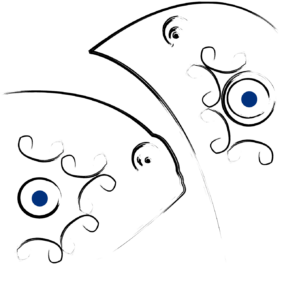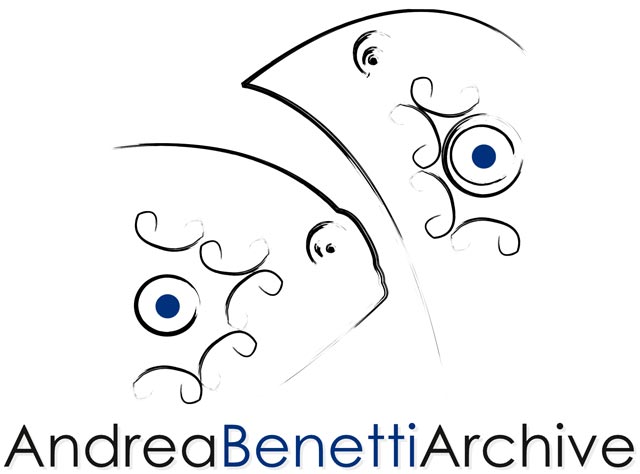Since the dawn of humanity, well before the invention of written language, Man felt the need to communicate, to leave some trace of his passage through this world. This he accomplished through painting. Early Man had to deal with the sun, the earth, the waters and the sky every day… had to find a way to find his place in the balance of Nature. And even when Nature was unthreatening, he was in awe of Her, treating Her with the respect due a Deity, in full awareness of his own human limitations. Contemporary Man has denied those limits and trampled that respect, placing himself at the center of the universe and giving his own selfish needs absolute priority. In doing so, he has stupidly destroyed the enchantment and desecrated the sanctity of Life and Nature.
So let’s take a step backward. Let’s start over, with the proper respect for Nature and for human life as our point of departure. Art needs to begin afresh from its earliest form: cave painting. We need to go back to the dawn of Man and his primeval art to reconstruct the world: a new world in which respect for Nature and human dignity are finally at the heart of the will of Man. Only in this way will we reaffirm the sacredness of Life.
Let’s begin with cave paintings, with which primitive man, being far wiser than we are, decorated his rocky walls to gain favor with the supernatural forces. This is what Art can do. We must rediscover within ourselves that primordial, uncontaminated essence, free of the preconceptions which condition modern Man: conditions imposed by a global consumption-driven society that is spurring us on to become unstoppable producers and insatiable consumers of an endless stream of goods. We need to rebalance the relationship between Man and Environment, between production and consumption. We need to seek the purity of our inner child who has yet to discover the world but instead still interprets it through his imagination, observing it with wonder and curiosity.
We need to live as if the present moment were eternal, regarding the past with a critical, but constructively critical eye. We must cease seeing our lives as merely utilitarian, where every action can be likened to a chess move, aimed at conquering the board. We must learn to live by listening to our own essence: that childlike essence that loves contact with nature, eats healthy food, lives in tune with traditions, the deep-rooted and widely-shared values that have long buoyed humanity. We seek refuge from the advancing cement blocks, from the plastics that have come to envelop everything, from the frantic pace that subconsciously permeates our every deed, pushing us into a headlong rush even when there is effectively no need to hurry. Let’s take back the course of history and not passively accept the changes forced on us by the powers that be, which, through campaigns of persuasion tactics, have tried to take away our individual personhood and reduce us to mere numbers, weighed down with heavy minds. A person cannot be reduced to a number, not even in the face of the unprecedented rise in global population.
We need to remember that the human being is, first and foremost, an ethereal essence, beyond his material body, which all too often is obsessed with the pursuit of ephemeral pleasures. This concept seems to have escaped our conscious mind and its flight has had dire consequences. To deny or fail to cultivate the immaterial sphere of our humanity is to deny that which makes us human. This concept is not rooted in any religion, but is the fruit of a “dualistic” view of the individual which recognizes that human beings develop and grow on both levels. Not allowing the material side of life to outweigh the ethereal is a sign of wisdom and awareness that elevates us above other living creatures. Without this element of mystery, of immaterialism, man has no future and is destined to become extinct. But before extinction, he will have reached the lowest point of his existence, where life itself ceases to be of value, having been sacrificed on the altar of rampant hedonism devoid of any solid content. By the same token, as far as art goes, symbols, lines and colors need to once again be the main features of a painting, recounting in their simplicity and beauty the life they represent. We need to allow the primordial instincts that resides within each of us to be our guide, our key to interpreting the world around us. Even our assimilation and use of the most advanced technologies has to be filtered by this sensitivity. This sense of mystery, of the unknown, must reign unencumbered in art. There must be an element of doubt because in a “society of certainties”, there is no room for imagination and anything that recalls imagination seems fake, designed in some office to produce a particular effect. We draw distinct boundaries between that which is truly felt, which comes from that “mysterious” part of ourselves, and that which is false and exploitive. A broken-down washing machine or a rusted bicycle are not art; they are simply a broken-down washing machine or a rusted bicycle. Art is another thing altogether.
In the ancient caverns, where prehistoric “cave-artists” traced their lines and spread their colors, every art form was invented: figurative, abstract, symbolic, conceptual… The future of painting was already mapped out; nothing was missing. Let’s start over, then, once again tapping into those flashes of intuitional, instinctive genius that come straight from the heart with the power of a child; the child who draws and colors, often without knowing what his creations might mean, since they appear full-blown and unadulterated directly from his subconscious. Producing a hundred times more goods than we actually need while passively witnessing a huge portion of humanity perish each day for lack of food and water is criminal and the antithesis of our instinctual tendencies. How can our conscience allow a consumerist civilization to exist in a world where so many are struggling, often in vain, merely to survive? We need to start from scratch before it’s too late, if it isn’t already.
If humanity hopes to escape self-destruction, it must start over, trying not to make the same mistakes but placing importance on the true values of human existence, refuting the false myths and idiocies imposed by a vacuous lifestyle that generates profit for those that control it.
It is easier for the powers that be to rule over a people that does not think for itself or educate itself, but blindly follows the dictates of laboratory-created fashions. If we look around us and begin to measure people’s general level of awareness, we realize just how much we have been tricked: tricked into a stupor of stupidity that has rendered us harmless; tricked into believing that the flood of stuff we are meant to desire is the essential meaning of life, the goal of our existence. The progress of our civilization has been characterized by a host of factors which may be regarded as double-edged swords, depending on how we use them. Unfortunately, improper use or abuse of many goods in our society has come to be the norm, rather than the exception; a well-established way of life.
This is true across the board, uniting the indigent with the wealthy, the young and their elders, all running a mad, frantic race which is leading us away from our identity as individuals and turning us into pawns, into puppets whose movements and choices are manipulated from above, so cleverly that we don’t realize we are victims of a dictatorship, but believe we are exercising our free will as individuals. We have therefore been “programmed” like remote-controlled toys to believe that we are free to make our own choices and decide for our own future. But in fact we are not free and never will be unless we manage to break the shackles of our tacit and often unconscious obedience. This is why art needs to return symbolically to its roots. In every era art has been ahead of its time, a beacon to be followed. This time, however, it will not be leading blindly towards unexplored territory, but will have the wisdom to backtrack towards its origins, aware of the importance of its role in providing the cornerstones for reconstructing the foundations on which our very existence is built. It will be a return to our symbolic roots, but remember that symbols sometimes have a power which is matched only by the force of Nature. And it is with Nature that we must seek harmony; Nature that we must once again learn to respect and to love.

![]() © Copyright · All rights reserved 2006 > 2025 · Italian Contemporary Art · Cookie Policy
© Copyright · All rights reserved 2006 > 2025 · Italian Contemporary Art · Cookie Policy
![]() © Copyright · All rights reserved 2006 > 2025 · Italian Contemporary Art · Cookie Policy
© Copyright · All rights reserved 2006 > 2025 · Italian Contemporary Art · Cookie Policy


